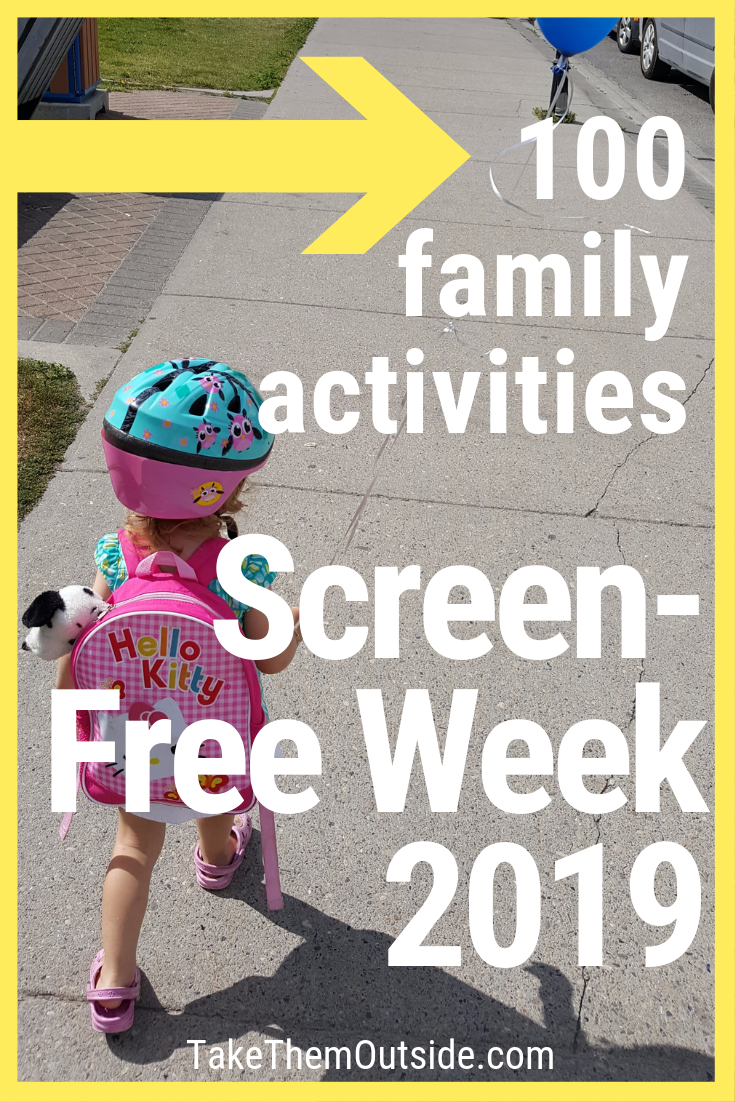A Realistic Guide To A Screen-Free Week For Kids

Table of Contents
Planning Your Screen-Free Week
Successfully navigating a screen-free week for kids requires careful planning. It's not about a sudden, drastic change, but a gradual shift towards a healthier balance.
Setting Realistic Goals
The key to a successful screen-free week is to set realistic goals. Don't jump straight into a full week if your children are heavily reliant on screens.
- Start small: Begin with a shorter period, like a day or two, to ease into the transition.
- Gradual reduction: In the weeks leading up to your screen-free week, gradually reduce daily screen time. This helps avoid a sudden shock to their system.
- Focus on one screen at a time: Tackle one type of screen at a time. For example, start by limiting TV time, then gradually reduce tablet or phone usage.
Family Communication and Buy-In
Involving your children in the planning process is crucial for their buy-in and cooperation. A family meeting can be a great way to open the conversation.
- Family meeting: Discuss the goals and expectations of the screen-free week together.
- Brainstorming: Involve your children in brainstorming alternative activities they'd enjoy. This sense of ownership makes them more likely to participate.
- Explain the benefits: Clearly and simply explain the benefits of a screen-free week, such as improved sleep, more family time, and opportunities for creative play.
Preparing the Environment
Minimizing access to screens is a critical step in ensuring a successful screen-free week.
- Hide devices: Put devices away in a drawer or closet, out of sight and out of mind.
- Turn off Wi-Fi: Consider turning off your home Wi-Fi during designated screen-free periods.
- Designate screen-free zones: Establish specific areas in the house where screens are completely prohibited.
Finding Engaging Screen-Free Activities
The success of your screen-free week hinges on offering appealing alternatives to screen time. Here are some ideas to inspire creativity and family bonding:
Creative and Imaginative Play
Unleash your children's creativity with activities that stimulate their imaginations:
- Arts and crafts: Painting, drawing, sculpting, making collages.
- Building forts: Use blankets, pillows, and furniture to create a magical space.
- Dress-up and role-playing: Encourage imaginative scenarios and storytelling.
- Board games and card games: Choose age-appropriate games to foster friendly competition and family interaction.
Outdoor Adventures
Encourage physical activity and connection with nature:
- Hiking and biking: Explore local trails and enjoy the fresh air.
- Park playtime: Organize games like tag, hide-and-seek, or frisbee.
- Nature center visits: Learn about local plants and animals.
- Gardening: Get your hands dirty and plant flowers or vegetables.
Connecting with Family and Friends
Prioritize meaningful social interaction:
- Family game nights: Play board games, card games, or even charades.
- Reading aloud: Share stories and enjoy quality time together.
- Visiting grandparents or friends: Arrange playdates or family visits.
Managing Challenges and Setbacks
Even with careful planning, you might encounter some challenges during your screen-free week. Anticipating these and having strategies in place will make the transition smoother.
Dealing with Withdrawal Symptoms
Kids might experience withdrawal symptoms, such as irritability, boredom, or clinginess. This is normal!
- Acknowledge feelings: Validate their feelings and explain that these are temporary.
- Offer alternative activities: Redirect their attention to other engaging activities.
- Emphasize the temporary nature: Remind them that the screen-free week is for a limited time.
Handling Screen Time Emergencies
Unexpected situations may arise that require screen use. Plan for these in advance.
- Establish clear guidelines: Define specific exceptions and stick to them.
- Set time limits: If screen use is necessary, limit the time strictly.
Rewards and Incentives
Positive reinforcement can keep kids motivated throughout the week:
- Reward chart: Create a chart to track their progress and celebrate milestones.
- Small prizes or privileges: Offer small rewards upon completion of the screen-free week.
Conclusion
Successfully implementing a screen-free week for kids involves careful planning, finding engaging alternatives, and managing potential challenges. By setting realistic goals, involving your children in the process, and offering creative alternatives, you can create a positive and rewarding experience. Remember the key takeaways: improved sleep, stronger family bonds, and boosted creativity. Give your kids the gift of a screen-free week! Start planning your family's screen-free week today and discover the benefits of a technology detox for your family. [Link to a printable checklist]

Featured Posts
-
 Abn Amro Rapport Te Grote Afhankelijkheid Van Goedkope Arbeidsmigranten In De Voedingsindustrie
May 22, 2025
Abn Amro Rapport Te Grote Afhankelijkheid Van Goedkope Arbeidsmigranten In De Voedingsindustrie
May 22, 2025 -
 Juergen Klopp Un Doenuesue Duenya Devini Kim Yoenetecek
May 22, 2025
Juergen Klopp Un Doenuesue Duenya Devini Kim Yoenetecek
May 22, 2025 -
 Vybz Kartels Brooklyn Concerts A Review Of The Performances
May 22, 2025
Vybz Kartels Brooklyn Concerts A Review Of The Performances
May 22, 2025 -
 The Goldbergs Impact And Cultural Significance
May 22, 2025
The Goldbergs Impact And Cultural Significance
May 22, 2025 -
 Cassis Blackcurrant From Berry To Bottle
May 22, 2025
Cassis Blackcurrant From Berry To Bottle
May 22, 2025
Latest Posts
-
 Antiques Roadshow National Treasure Appraisal Leads To Arrest Of Couple For Trafficking
May 22, 2025
Antiques Roadshow National Treasure Appraisal Leads To Arrest Of Couple For Trafficking
May 22, 2025 -
 Antiques Roadshow Stolen Artifacts Result In Couples Arrest
May 22, 2025
Antiques Roadshow Stolen Artifacts Result In Couples Arrest
May 22, 2025 -
 National Treasure Trafficking Antiques Roadshow Episode Results In Arrests
May 22, 2025
National Treasure Trafficking Antiques Roadshow Episode Results In Arrests
May 22, 2025 -
 Antiques Roadshow Leads To Jail Time For Couple With Stolen Items
May 22, 2025
Antiques Roadshow Leads To Jail Time For Couple With Stolen Items
May 22, 2025 -
 Us Couple Facing Charges After Bbc Antiques Roadshow Episode
May 22, 2025
Us Couple Facing Charges After Bbc Antiques Roadshow Episode
May 22, 2025
